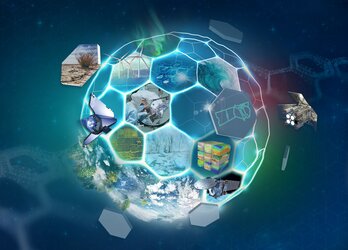Engineering Guidelines for ESA IOD CubeSat Projects released
Just released, the Engineering Guidelines for ESA IOD CubeSat Projects provide a valuable reference for industry, academia, and research institutions, developing CubeSats systems and products.
Prepared by experts from ESA’s Directorate of Technology, Engineering, and Quality (D/TEC) under the guidance of the CubeSat Systems Unit (TEC-SIU), the handbook provides guidance and recommendations on how CubeSat engineering activities should be carried out.
The main objective is to support external partners in tackling known technical issues and mitigate project risks, leveraging ESA’s accumulated experience from multiple CubeSat missions that have been designed, tested, launched, and operated under its responsibility. The resulting flight and ground test data, combined with accumulated lessons learned, form a solid basis of enhancing the engineering processes used in CubeSat projects.
‘The release of the Engineering Guidelines marks a significant step in aligning ESA’s CubeSat activities with a structured, sound engineering approach. By sharing our experience with the wider community, we aim to foster innovation and mission success while ensuring CubeSats remain a credible platform for demonstration and operational use within ESA’s programmes’, comments Roger Walker, Head of the CubeSat Systems Unit.
‘Whether you are new to CubeSats or looking to strengthen your project execution, this document is designed to support you. It provides a clear, structured approach to the engineering work, helping teams move faster, make better decisions, and have fewer surprises along the way’, adds Roberto Capasso, YGT in CubeSat Systems Engineering and book captain for the Engineering Guidelines.
Complementing the tailored ECSS standards for IOD CubeSats, the guidelines focus on best practices specific to the CubeSat missions, recognizing their distinct characteristics compared to larger ESA spacecrafts.
Key topics addressed include:
- Project management
- Mission/Systems engineering, system assembly, integration and verification (AIV), and system reliability and availability
- Subsystems engineering (all relevant disciplines)
- Electromagnetic compatibility (EMC)
- Ground segment & operations engineering
- Space debris mitigation compliance
- Radiation hardness assurance (RHA)
You can request access to the Engineering Guidelines here.















 Germany
Germany
 Austria
Austria
 Belgium
Belgium
 Denmark
Denmark
 Spain
Spain
 Estonia
Estonia
 Finland
Finland
 France
France
 Greece
Greece
 Hungary
Hungary
 Ireland
Ireland
 Italy
Italy
 Luxembourg
Luxembourg
 Norway
Norway
 The Netherlands
The Netherlands
 Poland
Poland
 Portugal
Portugal
 Czechia
Czechia
 Romania
Romania
 United Kingdom
United Kingdom
 Slovenia
Slovenia
 Sweden
Sweden
 Switzerland
Switzerland

























